 Abraham Lincoln
If given the truth, the people can be depended upon to meet any national crisis...
Abraham Lincoln
If given the truth, the people can be depended upon to meet any national crisis...
 Guildford news...
for Guildford people, brought to you by Guildford reporters - Guildford's own news service
Guildford news...
for Guildford people, brought to you by Guildford reporters - Guildford's own news service
The Effingham Eye: Two Men In A Boat (Nowhere Near Effingham)
Published on: 2 Nov, 2016
Updated on: 11 Nov, 2016
This column is intended to be about Effingham affairs (not necessarily extra-marital but feel free to write in).
However, I want to write about my canoeing experiences and associated stuff: swan attacks, ancient ruins, the Magna Carta, Windsor Castle, a tenuous link with Chernobyl, the amazing Dunkirk boats, wildlife and some wonderful people.
I asked the editor for advice. He said: “Canoeing? (pause) And you are going to cover Chernobyl, Dunkirk and Windsor Castle?”
“And the Magna Carta. Yes.” This was not going well, “It’s just a tenuous link to Chernobyl.”
“Really?… Erm… is there actually a river in Effingham?”
“No.”
“A canal? A Roman aquaduct? A wild stretch of coastline perhaps, one that not many of us have noticed before?”
“No… I detected some negativity. But I am from Effingham and it would be observations through my eye.”
I decided not to extend the nautical theme and mention eye patches and pirates.
“I mean eyes.”
“Sigh. Yeah why not? After all, Howard of Effingham was a sailor wasn’t he and your village sign is a boat?”
He still did not sound enthusiastic. Anyway here goes…
My friend Dave King invited me along two years ago and here are a few snippets of our 182 miles of canoe trips over that period. Our expeditions have been on rivers, tributaries, backwaters, canal navigation systems and by carrying the canoe by hand.
Occasionally we have had to wade through shallow waters dragging the boat through undergrowth or small weirs. We have even used a saw to cut our way through fallen trees and shrubbery.
Armed with Nicholson’s Ordnance Survey book on local waterways two Effingham men in a canoe set out. What follows is just a snap shot of our adventures.
We covered between 10 and 12 miles a day usually starting and ending at the same place [i.e. you got nowhere. Ed]. We have dodged round a half-ton bale of hay and suffered multiple attacks from an aggressive swan.
We’ve heard all the jokes like, “Where’s the third man?” The oft repeated, “The guy at the back isn’t paddling” and my favourite, “Can’t you go any faster?”
But we always join in this repartee with good nature by showing our archery fingers are in tact. Even so we have been provided with tea by bargees on two separate occasions and even had tea at a Manor House. People on the water are usually friendly and out to enjoy themselves and a little bit of banter adds to that enjoyment.
Bear in mind that everything takes place on average at an eye-watering 3mph or a fraction less. Where rainfall means that you not only get rather wet but unless you are on a canal like the Basingstoke you end up with the current taking you backwards. (Yes there is a slight flow on canals – otherwise there would be a problem working the locks. Actually there can be water shortage problems and sometime the locks are closed to pleasure craft.)
Swan Attack
Actually it was on the Basingstoke Canal just off the end of the runway at Farnborough where we had our swan encounter. It attacked us whilst we were heading upstream and then again when we were coming back down.
Each attack was in multiples as the swan, after numerous thumping takeoffs, tried to hit us with its wing. We were not the only victims as we saw it attack other waterfowl as we were approaching the first time.
David had capsized during a previous swan attack so we were prepared to sit still and endure the attacks, usually from behind. In his previous encounter he and his companion had heard the thumping takeoff and both glanced round at the same time thereby overturning the boat [Is that how synchronised swimming started? Ed].
In our case the swan had no mate or cygnets to protect but simply an impressively vile temper. Well, no matter how ready you can be, it is still unnerving to be at the receiving end of a powerful and noisy attack.
Frankly there’s not much you can do and whilst it might have been tempting to defend ourselves we were passing through his territory with limited options.
For the first wave of attacks we braced our paddles vertically behind our backs, heads and necks to protect us from injury. But it was perhaps all for show as the swan, for all its aggression and repeated efforts, never actually struck either of us.
On the return trip there were two elderly ladies watching us from a footbridge and no doubt enjoying the show. We solved this second wave of attacks by loudly slapping the water with our paddles. This had the desired effect but unfortunately broke one of the paddles [Well it would have been impossible for the swan to attack while laughing hysterically. Ed].
Again David was well prepared and had a spare. We chanced upon a river warden and told her about the swan. She said that they did not know what to do with it as it also regularly attacked walkers on the towpath. [Why not insert some sage and onion and send it to Her Majesty, for her larder, or is that coming up under Windsor Castle? Ed]
Odiham Castle
On a previous trip, up a different stretch of the Basingstoke Canal, we launched at Dogmersfield near the Barley Mow Pub. We canoed up as far as it was navigable to Odiham Castle where there just happens to be an excellent pub called the Fox and Goose at Greywell.
There is a long tunnel at Greywell that had collapsed many years ago and, whilst it effectively prevents further upstream boating it is now an important European nature reserve for a large colony of 12,500 bats including the largest known colony of Natterer’s bats.
The water leaving the tunnel is crystal clear for a few hundred yards. No boats churn the sediment and this results in stunning views of undisturbed wildlife.
Hidden away a few yards off the towpath is Odiham Castle dating from 1207 with the only octagonal keep in England. It was from here that we are informed King John, probably England’s least popular king, stayed the night before setting off to sign the Magna Carta at Runnymede.
Shortly after we were on the Thames and canoed past the place where King John is meant to have eventually agreed to have his seal placed on the Magna Carta.
The exact location is debated but regular tourist laden cruisers head to Runnymede during the summer months as access is on the opposite side to the A308, where most people go to enjoy the riverside.
We had entered the River Thames by the Wraysbury Skiff and Punt Club in Runnymede, off the A308, and paddled up to Windsor passing the castle from the south having gone through Romney Lock.
Anyway, this stretch of river is not exciting, Windsor Great Park seems to go on forever with signs every 100 yards warning all against mooring. Police constantly patrol these areas and the use of electronic surveillance sensors was an obvious and rather sad, if necessary, indictment of the times in which we live.
Whilst the views along this stretch were a tad monotonous there were more mute swans in Windsor town than I’ve seen in my entire life. Literally hundreds of them all demanding my sandwiches that I duly threw their way. These swans were well natured, unlike their compatriot on the Basingstoke Canal [Perhaps they had heard about the proposed sage and onion treatment? Ed].
As a point of minor interest, canoes generally go through the locks on the Thames but routinely have to be carried round the canal locks. This is to avoid wasting the limited water supply involved in emptying canal locks.
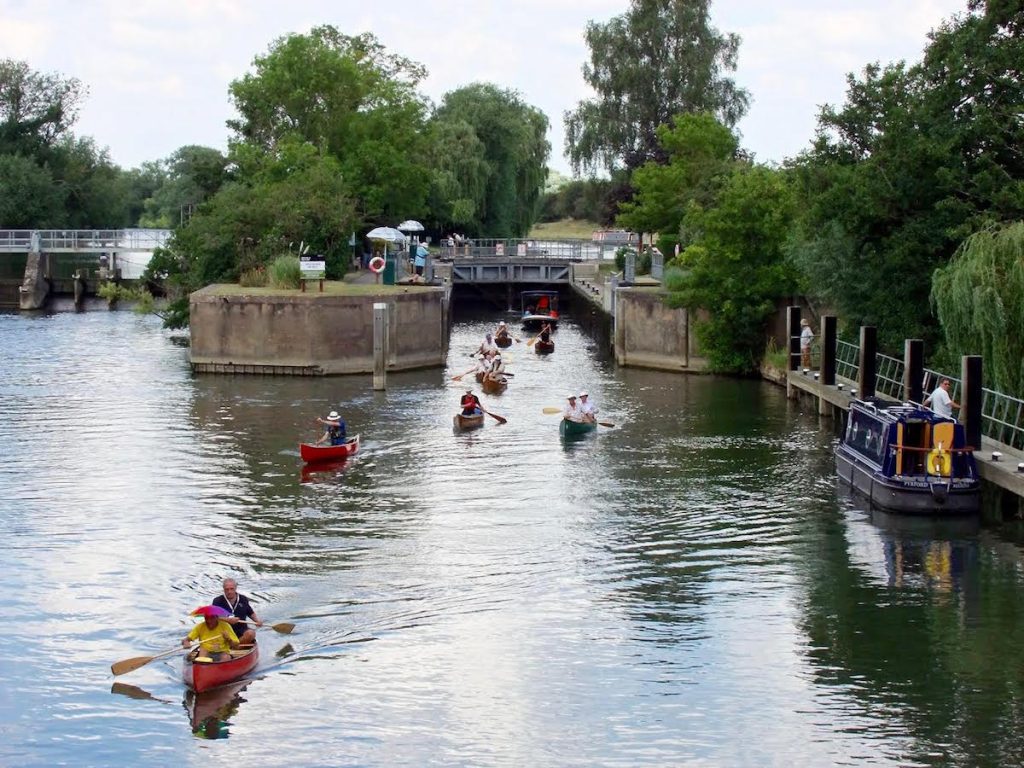
Traditional Thames Boats Society and Wooden Canoe Heritage Association canoes leaving Days Lock on the River Thames on 23 July 2016. © Sue Milton
It was on the above outing that we turned up the narrow River Thame, a tributary of the River Thames, when I saw three young adults running away across the fields having apparently, for devilment, just rolled a half-ton bale of hay into the river.
The bale virtually blocked the river but, whilst we were able to squeeze round it, we were glad that we had not been out of view, in the deep cut of the river, when the bale rolled in.
On another occasion we went up the River Wey (as opposed to the navigation) having started on the canal at Wisley by The Anchor pub. As we left the navigation to head up the river there are signs all over the place that said, “No Boating, Private Waters” etc but we did not pay much attention to them.
These signs have little meaning as the waterways are open to all who have the appropriate licence, which we do.
We worked up this narrow fast flowing river to Old Woking. After about an hour of paddling we reached the converted paper mill at Old Woking, which is now residential. This was as far up as we could go.
En route we had been rewarded by the sight of a Buzzard flying away with a grass snake to feed its young. Everywhere we had seen damselflies, water fowl such as herons, cormorants, several different species of ducks, kites and cattle and despite being in one of the most densely populated counties in the country, not a living soul.
The return trip was exciting as the current moved rapidly and we really put our backs into going as fast as possible. It sounds slightly ridiculous but the combination of our efforts and the current made the meander into a slalom course with the canoe virtually skidding round the bends.
I doubt we were travelling at more than 6mph but it seemed faster and was great fun. Actually there are few sports that sixty and seventy-year-olds can do and there are those in their eighties who can and do enjoy these waterways.
On a different trip launching from the same location we went up the weir stream round Newark Lock and were rewarded by fabulous views of Newark Priory as the stream wound round the ruins.
Several times we have canoed from Godalming to Guildford and back. We have always launched at Godalming from just behind the Superstores. Parking is free to Canoe Club members and there is a key that can be obtained from the National Trust at the Dapdune Wharf in Guildford.
The key is issued (for a price) by the National Trust for various waterway car parks and is very useful. Anyway, turning, at Shalford, into the old Wey and Arun Canal, now a mere backwater, we saw a grass snake swimming frantically away from us and plenty more amazing bird life.
Recently we returned to Aston Ferry and canoed down the River Thames to Marlow. The picture below really cannot do justice to the beauty and tranquility of this amazing stretch of waterway with its uninhabited islands and languid backwaters. The latter, being away from the main navigation, means that we see kingfishers and red kites: once we saw eight in the air at the same time.
David said, “This is so remote we might as well be going up the Amazon.” No boats, no people and no signs of civilisation, just silent waterways, abundant bird and insect life amongst the heavily tree lined banks, in places rising up 200 hundred feet, against almost hidden overgrown chalk cliffs.
On another occasion, starting from the Waterside Restaurant at Bray, we ended up at The Bounty Pub. This pub is only accessible via water or by footpaths from about three quarters of a mile away at Cookham or Bourne End.
The Bounty is eccentric to put it mildly. On one of its signs it claims that it is twinned with Chernobyl and on another welcomes visitors to the Peoples Republic of Cockmarsh. The staff were friendly and the food looked good.
Henley
This article could not end without mentioning our trip to Henley to attend the Traditional Thames Boat Festival. On arrival David swapped his paddle for oars to take part in the parade. The boats were amazing and we were treated to a fly past by a Hurricane, a Spitfire and (by chance) the Red Arrows.
We saw ancient steamboats, WW2 Motor Torpedo Boats, classic Rivas and then Gloriana came past. But stealing the show was a parade of about ten of the Dunkirk Little Ships. Each one had a Naval Rating on board and flew their special pendant at the front. Whilst it was humbling to witness this parade there, in one of the boats, was one of the survivors of the Dunkirk evacuation of British troops.
Sadly whilst writing this article my wife noted that that same 99-year-old gentleman had passed away. Vic Viner died 29th September 29 2016. He was one of the last remaining survivors from the 1940 Dunkirk evacuation.
The Daily Mail reported that: “Mr Viner was believed to be one of the last surviving Royal Navy veterans to take part in Operation Dynamo.”
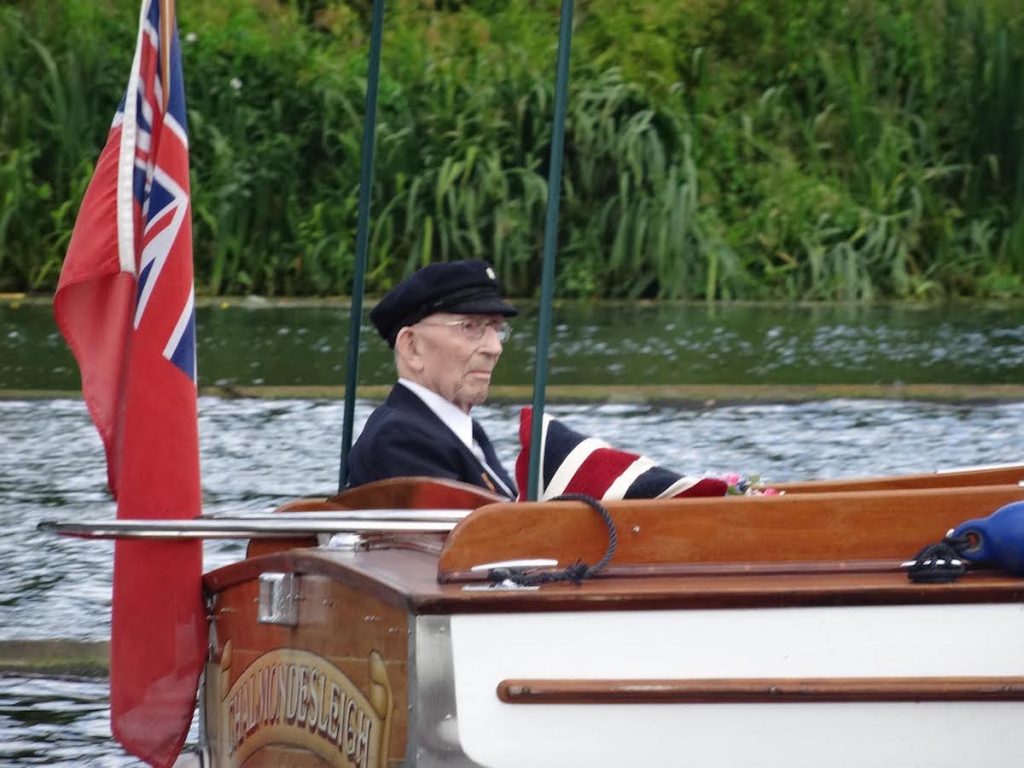
The late Vic Viner, who, until his death this year (2016) was one of the last surviving Royal Naval beach masters at Dunkirk.
Ian Gilbert, former commodore of the Association of Dunkirk Little Ships (ADLS), paid tribute to Mr Viner, “…a great individual with a superb personality who never seemed to think of himself as somebody who was well into their 90s.”
“He was very significant for us as he was the last survivor of what was known as the Royal Naval beach masters.
“They were landed by the Royal Navy on the beaches of Dunkirk and their job was to marshal the troops in an orderly fashion to get them onto the boats.
‘He’s certainly the last Royal Navy veteran that I know that took part in Operation Dynamo.’…”
Responses to The Effingham Eye: Two Men In A Boat (Nowhere Near Effingham)
Leave a Comment Cancel replyPlease see our comments policy. All comments are moderated and may take time to appear.

See Dragon story: GBC’s Explanation of Major Land Sale Notice Error ‘Borders on Arrogant’ Says Councillor






Recent Articles
- New Approach to Mental Health Concerns Reported to the Police
- Letter: Bernard Quoroll ‘s Insight Should Be Heard
- Police and Crime Commissioner Candidate Interview – Paul Kennedy
- Staff Union Warns Surrey University of No Confidence Votes
- Invitation to Join Mass Bike Ride on Saturday, April 27
- Thames Water Clarify Compensation Payments
- Surrey Fire and Rescue Service Urges Us All To Be ‘Wildfire Aware’
- Police and Crime Commissioner Candidate Interview – Lisa Townsend
- Insights Part 3: The Council Should Not Be Marking Its Own Homework
- Notice: In Our Own Words


Recent Comments
- Bibhas Neogi on M25 Junction 10 Project Required Major Engineering to Overcome Pipeline Snag
- Roland Dunster on Birdwatcher’s Diary No.302
- J Davies on Insights Part 3: The Council Should Not Be Marking Its Own Homework
- Angela Richardson on Insights Part 3: The Council Should Not Be Marking Its Own Homework
- Peter Wilkinson on Anger Over Traffic Impact of Golf Club Scheme
- Nicola King on Anger Over Traffic Impact of Golf Club Scheme
Search in Site
Media Gallery
Dragon Interview: Local Artist Leaves Her Mark At One of England’s Most Historic Buildings
January 21, 2023 / No Comment / Read MoreDragon Interview: Lib Dem Planning Chair: ‘Current Policy Doesn’t Work for Local People’
January 19, 2023 / No Comment / Read MoreA3 Tunnel in Guildford ‘Necessary’ for New Homes, Says Guildford’s MP
January 10, 2023 / No Comment / Read More‘Madness’ for London Road Scheme to Go Ahead Against ‘Huge Opposition’, Says SCC Leader
January 6, 2023 / No Comment / Read MoreCouncillor’s Son Starts Campaign for More Consultation on North Street Plan
December 30, 2022 / No Comment / Read MoreCounty Council Climbs Down Over London Road Works – Further ‘Engagement’ Period Announced
December 14, 2022 / No Comment / Read MoreDragon Interview: GBC Reaction to the Government’s Expected Decision to Relax Housing Targets
December 7, 2022 / No Comment / Read MoreHow Can Our Town Centre Businesses Recover? Watch the Shop Front Debate
May 18, 2020 / No Comment / Read More




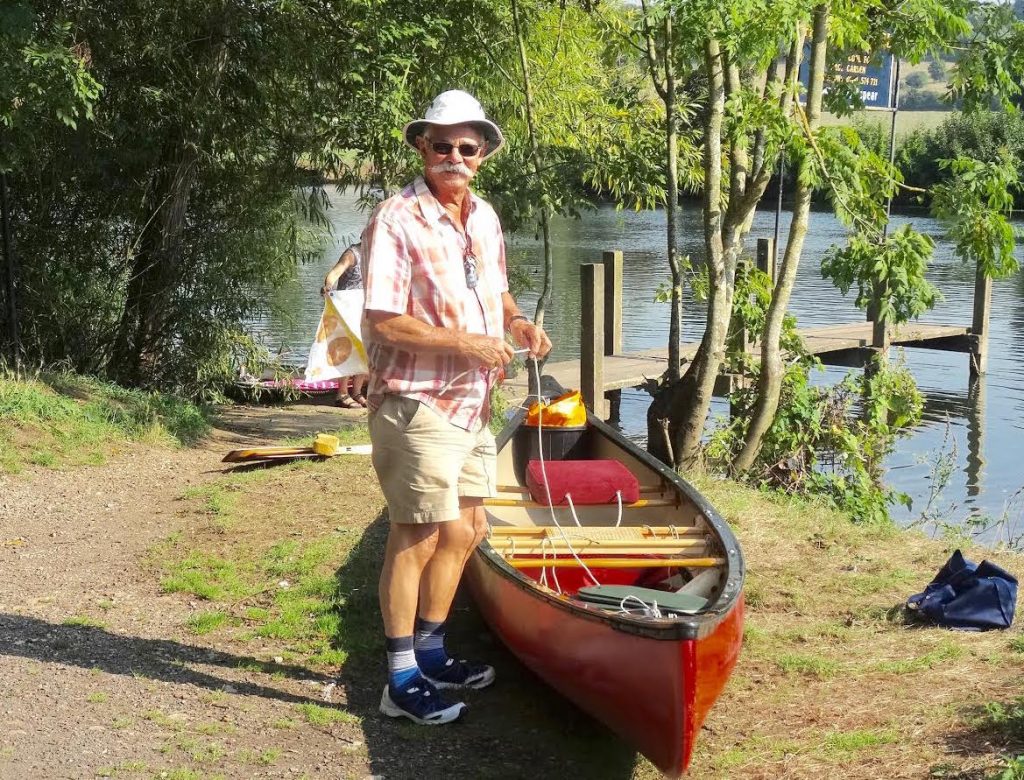
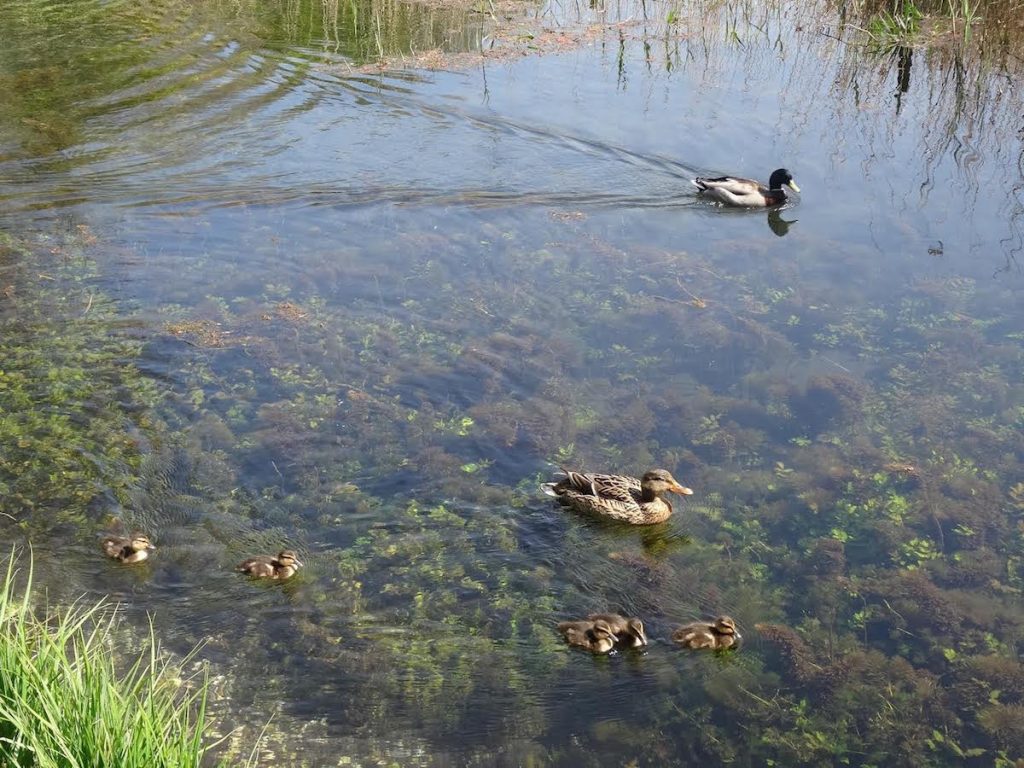
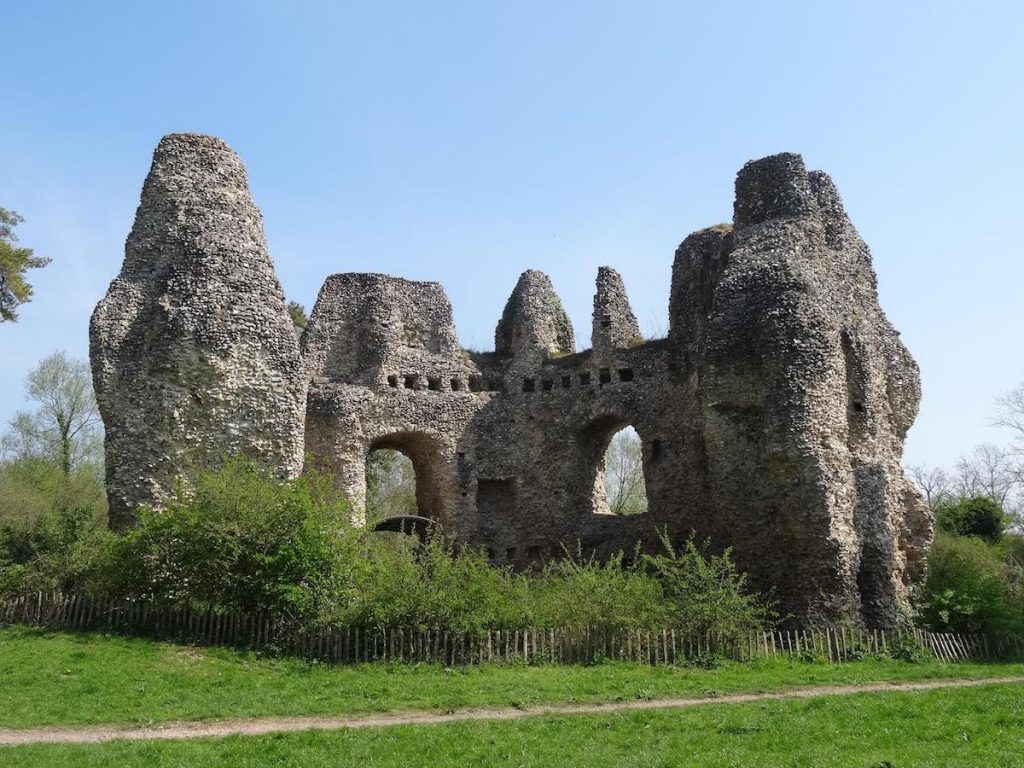
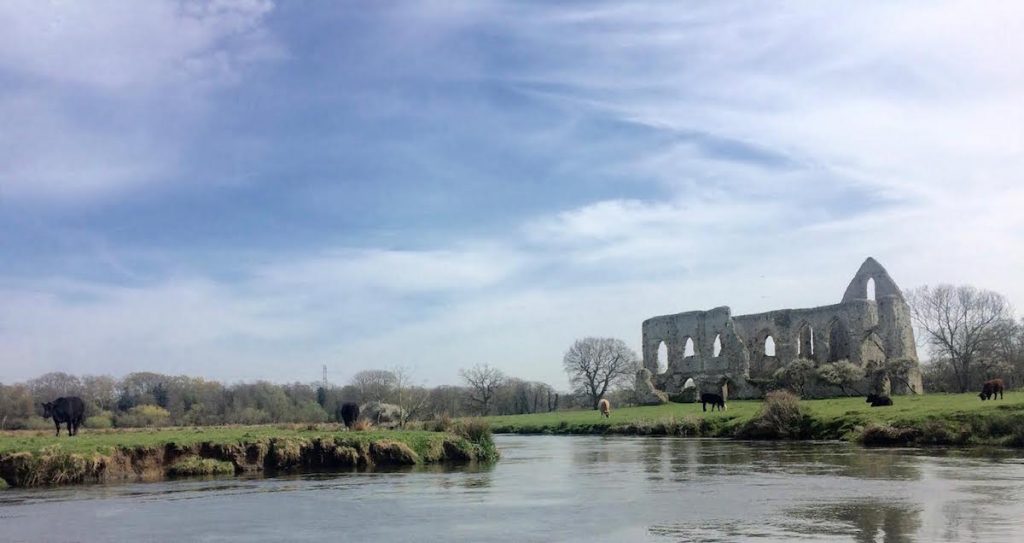
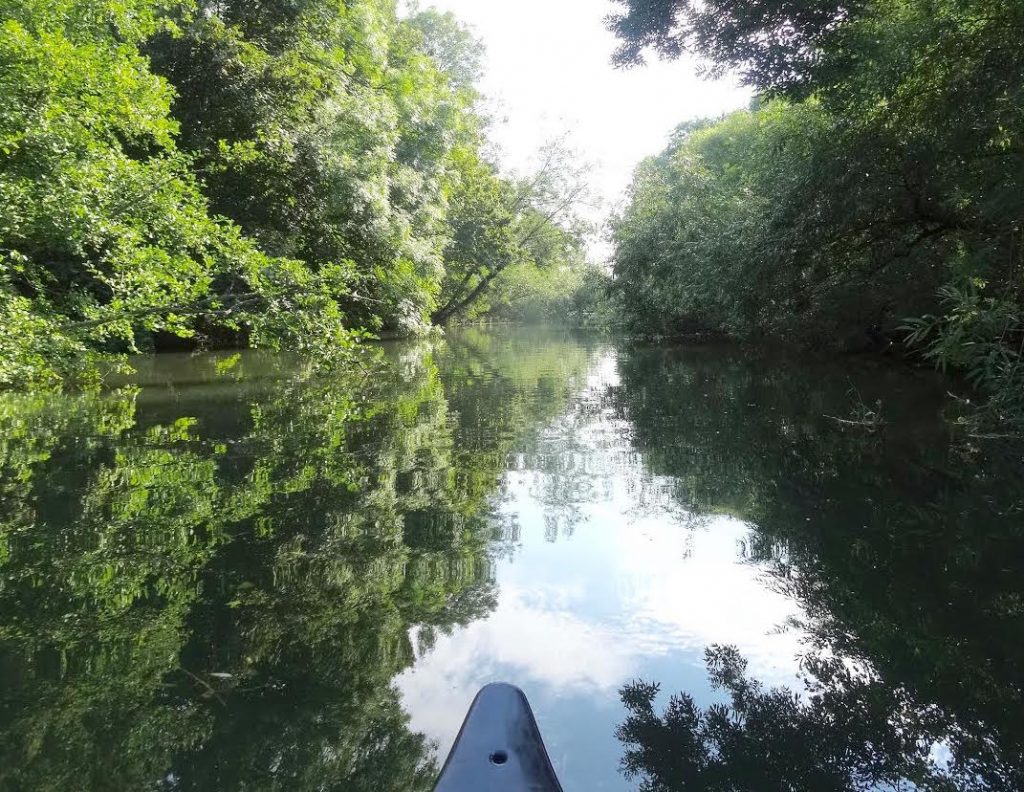
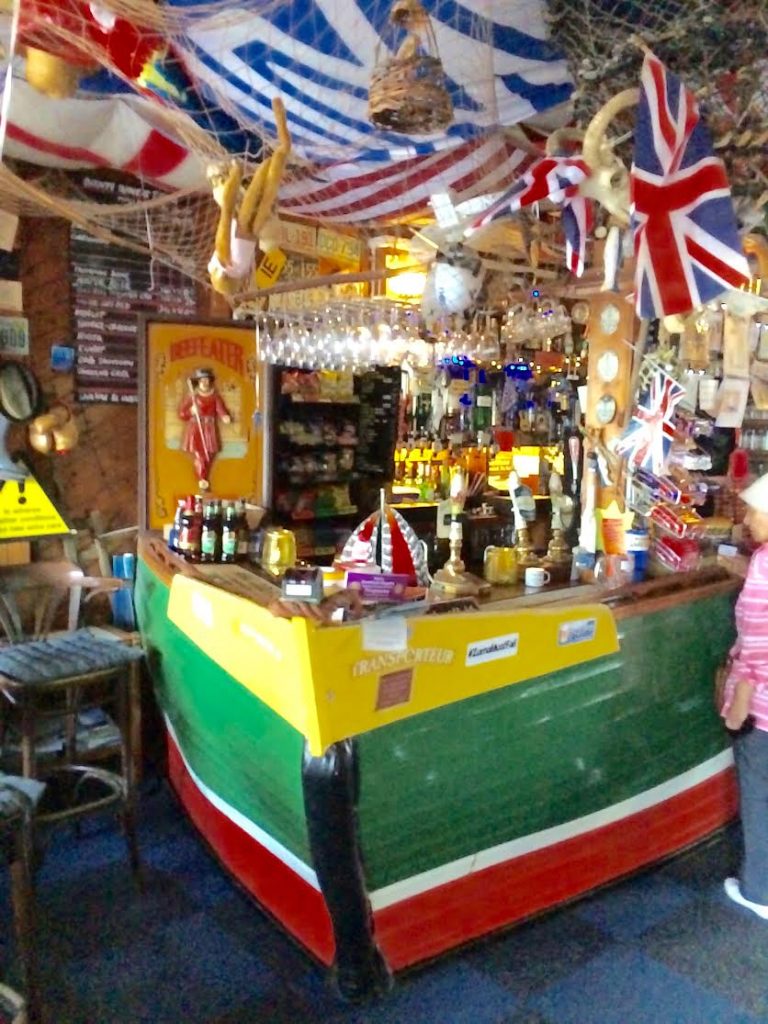
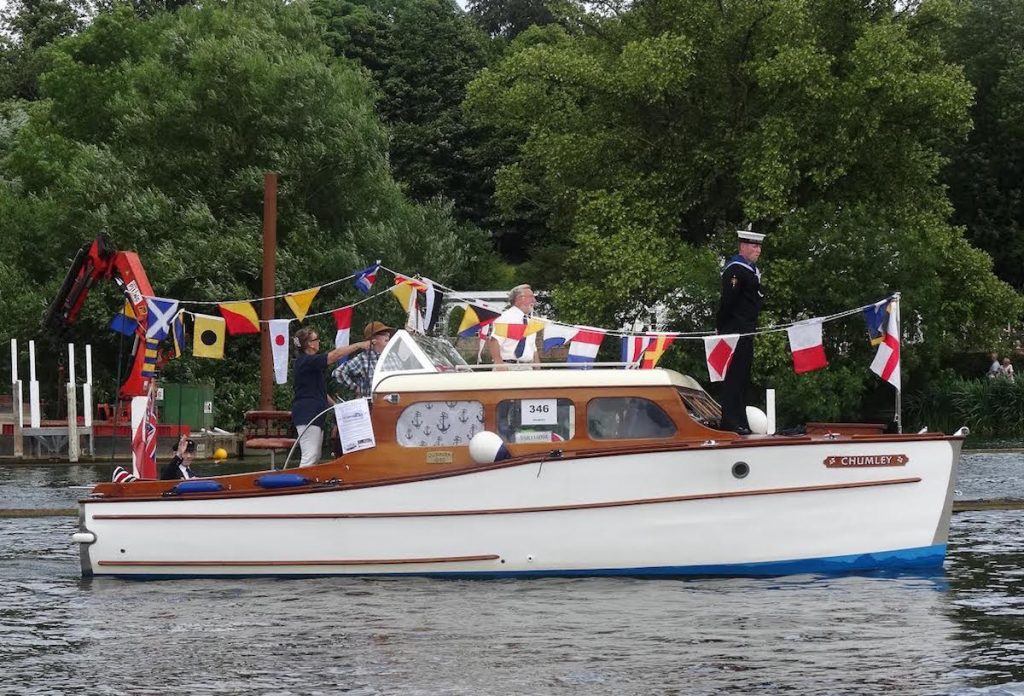



Jules Cranwell
November 3, 2016 at 9:57 pm
This is priceless, and worthy of JK Jerome himself. All you needed was a dog called Montmerency.